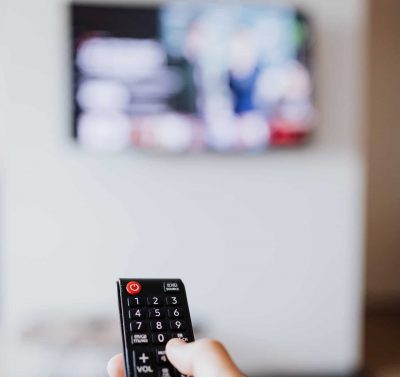
Your LG Smart TV remote makes it simple to access your favorite programs, browse channels, and alter configuration settings. But, it is also important to know how to repair your LG TV remote if it is not functioning properly. With that being said, here are our team’s top 8 solutions to solve the remote’s common errors.
8 Tried and Tested Fixes to a Faulty LG TV Remote
Fix #1: Change Batteries
The power button at the top should light up when you press buttons on the remote control. If it doesn’t, the battery has likely run out of juice. Make sure to replace the batteries and see if the remote functions normally.
Fix #2: Inspect Blockage on the IR Sensor
To investigate a blockage on the IR Sensor, you may see whether an IR signal was transmitted by looking at your phone camera at the IR source. If it’s functioning, you should be able to see it flash.
If it isn’t flashing, our technical experts suggest removing any obstructions in front of your TV so the remote can detect the IR sensor.
Fix #3: Let the TV Cool Off
The TV may need to be rest from time to time. To do this, disconnect the TV for 60 seconds. During this time, you should also remove the batteries from the remote.

Wait for 60 seconds before you turn the TV back on. You may also replace the remote’s batteries and attempt pairing again.
Fix#4: Unregister and Re-register Remote (For Magic Remotes)
Your Magic Remote may not be registering due to the following reasons:
- Batteries must be changed
- Infrared signal has been suppressed
To re-register the LG Magic remote, you must push and hold down the ‘Home’ and ‘Back’ buttons together on the remote. Wait for the power button at the top of the remote to flash. Hold the buttons again for about five seconds and until then, the LG Magic Remote can be reset.
Fix #5: Pair with a Universal Remote Control (For Magic Remotes)
The Magic Remote is the LG TV’s standard remote control and it can be paired with a universal remote. To do this, follow the instructions below.

Ascertain that the television is switched off, and the batteries in the Magic Remote are removed before proceeding with these steps:
- Turn the television on.
- Insert the Magic Remote’s batteries.
- Point the remote towards the TV and hit “OK.”
- To ensure the pairing is successful, hold down the “OK” button until you see a message on your TV that confirms the pairing.
Fix #6: Inspect for Damaged Buttons
There are instances that your LG TV remote not working because of accumulated dirt and debris that may have damaged the buttons. By removing the remote’s batteries and cleaning the buttons, you may be able to remove the deep-seated debris that’s hindering it from performing commands.
Also ascertain that the remote sends an IR signal [1]. There should be no signal if the button is damaged.
Fix #7: Update TV Software
Older TV software might be incompatible with your remote controller. If this occurs, you may use the little remote on the back of your TV.

It works the same way that your television remote does. It may be used to browse the menu. This may help; however, the best way is to update your TV software via the little remote on the rear.
Fix #8: Check Space for Fluorescence
In terms of finding for room fluorescence, some LED bulb or fluorescent light types might interfere with the signal from your remote control. This may result in LG TV remotes malfunctioning. To avoid this from happening, you may temporarily turn off the bulbs or lights to see whether they are the source of the issue.
FAQ
Why is my TV not responding to my remote?
Your TV is not responding to your remote due to low batteries or blockage on the sensor. Make sure that your remote control is pointed at the TV and there should be no other objects obscuring the TV remote sensor. Also check if there are other devices that could potentially be interfering with the signal.
How do I reset my LG TV remote?
To reset your LG TV remote, press and hold the ‘Home’ and ‘Back’ buttons on the remote simultaneously. Hold them for around 5 seconds or until the remote’s power button begins to blink. Afterward, pair the remote again to your TV again.
Conclusion
Our technical team hopes that these fixes assisted you in repairing your LG TV remote not working. If any of these techniques didn’t work, you may consult a service center or have the remote replaced. There are also local LG sales representatives you can contact if the issues continue to persist.
The post LG TV Remote Not Working? Here are 8 Surefire Ways to Fix It appeared first on The Product Analyst.
from The Product Analyst https://theproductanalyst.com/lg-tv-remote-not-working/













